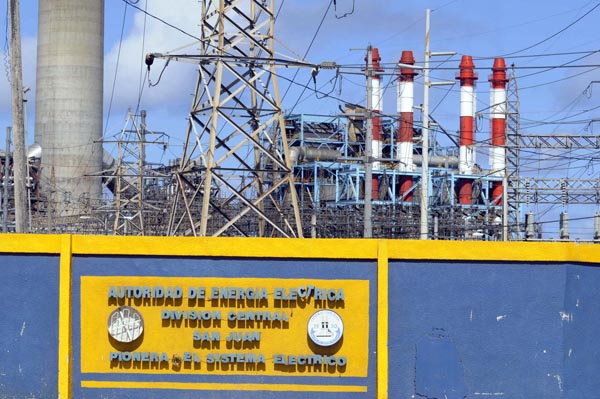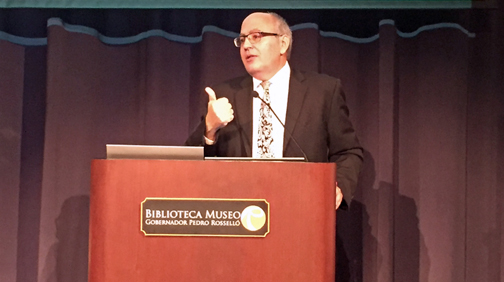P.R. Energy Commission unveils proposed microgrids regulation


NYU installed a microgrid that cost $126 million when it was built. (Credit: NYU)
Aware of the need to quickly and effectively restore Puerto Rico’s electrical service and simultaneously ensure its sustainable long-term development, the Puerto Rico Energy Commission has drafted the first regulation on the development of microgrids on the island.
“Last October, the Commission initiated an investigation into the status of Puerto Rico’s electrical system as a result of Hurricane María’s passage over the island,” said Commission Chair José Román.
“We studied various successful models in the United States and collected input from many companies and organizations interested in energy issues,” he said.
“The result is that we were able to develop — in a short period of time — a unique regulation that establishes a regulatory framework for developing microgrid systems, which certainly is a step leading toward energy restructuring in Puerto Rico,” he said.
As a result of the damage to the island’s electrical system — which was knocked out 100 percent and still remains partially down — and taking into account the fundamental role electricity plays on the island’s economic development and the daily lives of its citizens, its restoration should be the main short-term goal, he said.
However, it is not enough to identify strategies to restore electrical service as quickly as possible — it is also necessary that these strategies encourage the development of a modern, flexible resilient electrical system, he added.
A microgrid is a “group of interconnected loads and distributed energy resources acting as a single entity with respect to the Puerto Rico Electric Power Authority’s controllable transmission and distribution system.
A microgrid allows one or more clients to maintain and operate an independent, separate electrical system from PREPA, so that the availability of electric service does not rely solely on the corporation’s service and infrastructure.
There are several examples of microgrids that provide its users more control over the cost, quality, service driveability and energy sources used for electricity generation. Similarly, the development of microgrids has allowed certain communities to withstand natural phenomena, providing service continuity in times of massive blackouts because of these atmospheric events.
One example is the microgrid developed and implemented by New York University, which has a capacity of 13.4 MW, which supplies electricity to 22 buildings and installations. It is interconnected to the city of New York’s main electrical network, but it supplies the energy demand of its facilities using its own energy resources, only purchasing energy from the main power grid when its demand exceeds the microgrid’s capacity.
In general, the proposed rules establish microgrid categories based on their ownership structure, size, and whether or not it sales energy to third parties. This classification system seeks to ensure a rational and organized application of the regulatory requirements, in light of the nature and particular characteristics of each system, avoiding regulatory obstacles that would otherwise hinder the development of microgrids.
In the case of small cooperatives, the objective of the Commission is to create a light regulatory framework, taking into account that a cooperative structure mitigates the need for broader regulatory norms. On the other hand, in the case of for-profit systems (where the owner of the microgrid sells energy to third parties account that a cooperative structure mitigates the need for broader regulatory norms.
On the other hand, in the case of for-profit systems (where the owner of the microgrid sells energy to third parties, the Commission sought to establish the minimum safeguards necessary to protect the customer without creating obstacles to the development of, and investment in, said projects.
The proposed rule also establishes consumer protections, including a cap on the cost per kWh that certain categories of microgrids can charge to their customers, a cap that is initially set at the average of PREPA’s rate of 20.22 cents per kWh, as of June 2017.
Postponing developing microgrids no longer an option
The damage caused by the passage of Hurricanes Irma and María, and the complexity of the tasks of restoring electric service, make it necessary to stop postponing the development and implementation of a regulatory framework that encourages the deployment of microgrids, which includes installation of distributed generation technologies and energy storage, Román said.
As the Puerto Rico Energy Commission drafts this new set of regulations for microgrid development, the Rosselló administration has proposed its elimination and integration into a single entity that would group energy, telecommunications, and transportation as part of a streamlining effort and paring down of government agencies.
Last year, the Commission requested comments from the general public, in particular people and entities with a direct interest in the electricity sector, on the rules that the Commission should adopt to promote the development of microgrid systems.
“The process was very participatory and we received a total of 53 comments from individuals, nonprofit organizations and private companies interested in contributing ideas to establish a new power generation system on the island,” he explained.
“Through this proposed regulation, the Commission provides tools and models that developers and owners of microgrids can use to ensure compliance with the relevant classification for their system. The Commission will also develop simple registration forms to facilitate the certification of microgrids,” Román said.
The general public may submit comments on the proposed regulation until Feb. 5 by email to [email protected], by mail -Edificio Seaborne, 268 Muñoz Rivera Ave., Plaza Level Suite 202, Hato Rey, PR 00918, or by personal delivery.










